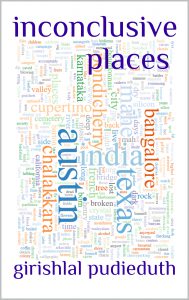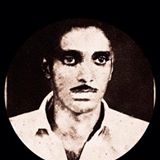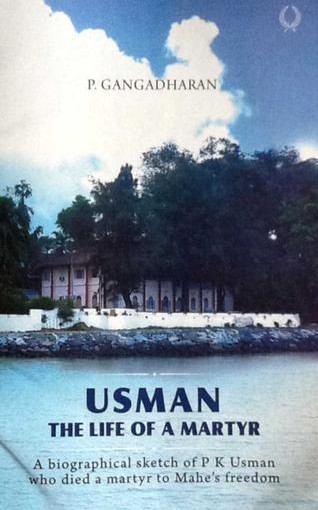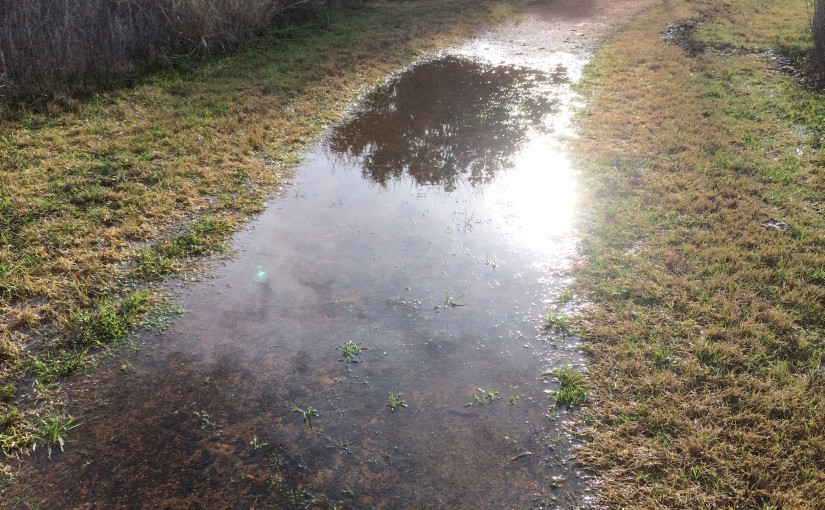കൂട്ടുപ്രതികള്: ഭാഗം രണ്ട്: വിചാരണ
എല്ലാവരും എഴുന്നേറ്റുനില്കവേ ബഹുമാനപ്പെട്ട ജഡ്ജി ജയിംസ് ഇമ്മാനുവേല് കോടതിയില് പ്രവേശിച്ചു. കോടതിനടപടികള് ആരഭിച്ചതായി ശിപായി വിളിച്ച് പറഞ്ഞു. എല്ലാവരെയും ഒന്നു നോക്കി, ഇരിക്കാന് ആംഗ്യം കാട്ടി, ബഹുമാനപ്പെട്ട ജഡ്ജി, തന്റെ വിധി പ്രസ്താവനയിലേക്ക് തിരിഞ്ഞു.
ക്രൈം നബറും അതിന്റെ കൊല്ലവും വായിച്ച ശേഷം, കേരള സര്ക്കാറും(ക്രൈം ബ്രാഞ്ച് വഴി), മത്തിപറബില് രാഘവന് മകന് ഗോപാലനും മറ്റു എട്ട് പ്രതികളും തമ്മിലുണ്ടായ കേസിന്റെ സംക്ഷിപ്ത രൂപം ജഡ്ജി വായിച്ചു. ഈ കുറ്റകൃത്യം അപഗ്രഥിക്കാന് PW01 മുതല് PW19 വരെ ഉള്ള സാക്ഷികളുടെ മൊഴികളും, Exts.P1 മുതല് Exts.P22(e) വരെയുള്ള രേഖകളും, MO01 മുതല് MO07(a) വരെയുള്ള തൊണ്ടി സാധനങ്ങളും സവിശേഷം പരിശോധിച്ചു പഠിച്ചതായി കോടതി വ്യക്തമാക്കി. പ്രതിഭാഗത്തിനായി ഹാജരായ DW01 മുതല് DW03 വരെയുള്ള സാക്ഷികളുടെ മൊഴികളും, പ്രതിഭാഗം ഹാജരാക്കിയ Exts.D1 മുതല് Exts.D(e) വരെയുള്ള രേഖകളും കോടതി സവിസ്തരം പരിശോധിച്ചിരുന്നു. ഇന്ഡ്യന് ശിക്ഷാ നിയമത്തിലെ 143, 147, 148, 341, 506(II), 302 IPC r/w 149 ഉം സ്ഫോടകവസ്തു നിയന്ത്രണ നിയമത്തിലെ അഞ്ചാം വകുപ്പും ആണ് ഇപ്പേര്പ്പെട്ട പ്രതികള്ക്ക് എതിരെ ചുമത്തപ്പെട്ട കുറ്റം. ഇത്രയും വിശദീകരിച്ച ശേഷം, താഴെ പറയുന്ന നാല് കാര്യങ്ങളാണ് ഈ കോടതി നിരൂപിച്ചു നിര്ണയിക്കാന് പോകുന്നതെന്നും കോടതി അറിയിച്ചു.
- ഇല്ലി പറമ്പില് മാധവന്, വയസ്സു 32, മരിക്കാനുള്ള കാരണം എന്തു?
- ഒന്നാം പ്രതി മത്തികരയില് ഗോപാലനും മറ്റ് എട്ട്പേരും, നിയമം ലംഘിച്ച് കൂട്ടം ചേരുകയുണ്ടായോ, അങ്ങനെയെങ്കില് ആ കൂട്ടം ചേരല് മാധവന്റെ മരണത്തിലേക്ക് നയിച്ചോ?
- വാളും, കത്തിയും, ഇരുമ്പുവടിയും, ക്രിക്കെറ്റ് ബാറ്റുമായി, പ്രതികളായി പേര് ചേര്ക്കപ്പെട്ടവര് മരിച്ചയാളെ ഭീഷണിപ്പെടുത്തുകയും, ആക്രമിക്കയും ചെയ്തോ?
- ഇപ്പേര്പ്പെട്ട പ്രതികള് മരിച്ചയാളെ കൊല്ലാനായി മുന്കൂട്ടി എടുത്ത നിശ്ചയത്തോടെ, മരിച്ചയാളെ ആക്രമിച്ചോ?
കോടതി മുറിയില്, കേസിന്റെ പരിണാമഗുപ്തിയുടെ ഇളം ചൂട് കനത്തു വരവേ, ജഡ്ജി പറയുന്ന ഓരോ വാക്കിലും കടിച്ചു തൂങ്ങുകയായിരുന്നു രേവതിയുടെ മനസ്സ്. “നിങ്ങളിലാണ് കേസിന്റെ വിധി” എന്നു ആദ്യം കണ്ടപ്പഴേ സര്ക്കാര് വക്കീല് സുകുമാരന് സര് പറഞ്ഞിരിന്നു. കൊലക്കു സാക്ഷി ഞാന് മാത്രം. രാഷ്ട്രീയ കേസ്സായതിനാല് മറ്റു സാക്ഷികള് പലരും കൂറു മാറും. പക്ഷേ കൂറ് മാറാന് പറ്റാത്ത ഒരാളെ സാക്ഷി പട്ടികയില് ഉള്ളൂ. അത് ഞാന് ആണു. അതുകൊണ്ടുതന്നെ പ്രതിഭാഗം വക്കീല് സതീഷ്ചന്ദ്രയുടെ എതിര്വിസ്താര ദിവസം രേവതി മാധവേട്ടന്റെ അടുത്തു കുറെ നേരം ഇരുന്നു. ധൈര്യം വരാന്. സാക്ഷി കൂട്ടിലിരുന്നു, സതീഷ്ചന്ദ്ര അടുത്തു വരുന്നത് കണ്ടപ്പോള് രേവതിക്ക് ഒരു കൂസലും ഉണ്ടായിരുന്നില്ല.
പ്രതിഭാഗം വക്കീല്: എത്ര വരെ പടിച്ചു നിങ്ങള്?
പ്രൊസീക്യൂഷന് വിറ്റ്നെസ്സ് 01: പ്രീഡിഗ്രീ വരെ
പ്ര.വ.: തോറ്റോ ജയിച്ചോ?
പ്രൊ.വി.01: പരീക്ഷ ആവാന് ആയപ്പോള് കല്യാണം ആയി. അതുകൊണ്ടു പൂര്ത്തിയാക്കിയില്ല
പ്ര.വ.: ഒരു ചെറിയ ഉപദേശം.. ഞാന് ചോദിക്കുന്ന മിക്ക ചോദ്യങ്ങള്ക്കും അതേ, എന്നോ അല്ല എന്നോ അറിയില്ല എന്നോ പറഞ്ഞാല് മതി. (ഒന്നു പുഞ്ചിരിച്ച്) “പിന്നെ കേട്ടോ. സത്യം മാത്രമേ പറയാവൂ”
പ്രൊ.വി.01: സത്യമേ പറയൂ
“നിങ്ങള്ക്ക് എലിസബത് ഫിലിപ്പിനെ അറിയാമോ?”
“ആരാത്?”
“എലിസബത്ത് അക്ക, എന്ന എലിസബത്ത് ഫിലിപ്സ്”
“അറിയും”
“ആരാണവര്?”
“ഇടയന്തക്കര കള്ളുഷാപ്പില് അടുക്കള നടത്തുന്നത് അവരാണ്”
“അവരോടു നിങ്ങള്ക്ക് എന്തെങ്കിലും പകയുണ്ടോ”
“എന്തിന്? അവര് നല്ലവരാ”
“നിങ്ങളോടോ, നിങ്ങളുടെ ഭര്ത്താവിനോടോ, അവര്ക്ക് എന്തെങ്കിലും മുന് വൈരാഗ്യം ഉണ്ടോ”
“ഇല്ല. ഏക്കത്തിന്റെ അസുഖമുള്ള ഓറെ മാധവേട്ടനാ പലപ്രാവശ്യം ഡോക്ടറുടെ അടുത്ത് കൊണ്ട് പോയത്… എന്തേ ഈ ചോദ്യങ്ങള്”
“oh! nothing. അവര് സത്യം പറയുമ്പോള് നിങ്ങള് അത് മുന് വൈരാഗ്യം കൊണ്ടാണ് എന്നു പറയരുതല്ലോ” (പെട്ടെന്ന് വിഷയം മാറ്റി) “നേരത്തെ നിങ്ങള് പറഞ്ഞത്, കുറ്റവാളി എന്നു നിങ്ങള് ആരോപിക്കുന്ന ഗോപാലന്, വാതില് തള്ളി തുറന്നാണ് നിങ്ങളുടെ മുറിയില് പ്രവേശിച്ചത് എന്നാണ് അല്ലേ?”
“അതേ.”
“അപ്പോള് നിങ്ങളുടെ മുറി വാതില് അടഞ്ഞാണു കിടന്നത്, അതെന്തേ ഇരുട്ടിന് മുമ്പെ മുറി വാതില് അടച്ചത്?”
“മാധവേട്ടന് അടച്ചതാണ്, ഞങ്ങള് കൂടിയിരിക്കുമ്പോള് വെറുതെ അമ്മയെ ബുദ്ധിമുട്ടികണ്ടായെന്ന് കരുതി”
“അപ്പോള് ജനവാതിലുകളും അടച്ചിരുന്നു?”
“ഇല്ല”
“അതെങ്ങനെ”, (കുറച്ചു ജ്യാള്യതയോടെ) “ഒരു ഭാര്യയും ഭര്ത്താവും കതകടച്ചു ഇരിക്കുകയാണെങ്കില്, ജനവാതിലുകളും അടച്ചിരികില്ലേ?”
“ഇല്ല, ജനവാതില് തുറന്നാണ് കിടന്നത്. വാളിന്മേല് വെളിച്ചം തടയുന്നത് ഞാന് ശരിക്കും ഓര്മിക്കുന്നുണ്ടു”
“പക്ഷേ,” (ഒരു ക്രൈം സീന് ഫോട്ടോ തന്റെ മേശപ്പുറത്തുനിന്നു എടുത്ത്) “ഈ ക്രൈം സീന് ഫോട്ടോയില് ജനവാതിലുകള് അടഞ്ഞാണല്ലോ കിടക്കുന്നതു?”
“ആള്ക്കാര് കൂടിയപ്പോ ആരോ അടച്ചതാ ജനവാതില്. ഉള്ളിലെ മരിച്ചു കിടക്കുന്ന ആളെ ആരും കാണാതിരിക്കാന്”
“ഓ.. പക്ഷേ ഞാന് ആ മുറിയില് പരിശോധിക്കാന് വന്നപ്പോള് നല്ല ഇരുട്ടായിരുന്നു ആ മുറിയില്”
“അത് പുതിയ വീടിന്റെ ചുമര് ജനവാതില് മറച്ചത് കൊണ്ടാണു. അന്ന് പക്ഷേ ആ പുതിയ വീട് ചുമര്വരെയൊന്നും ഉയര്ന്നിരുന്നില്ല”
“അടഞ്ഞ ജനവാതിലുകള് രണ്ട്! അതാണ് ഈ ക്രൈം സീന് ചിത്രത്തില്. മുറിക്കുള്ളില് അരണ്ട വെളിച്ചത്തില് എങ്ങനെ കണ്ടു നിങ്ങള് ഗോപാലനെ?”
“നല്ല വെളിച്ചം ഉണ്ടായിരുന്നു”
“എന്നിട്ടും എന്തുകൊണ്ടു ഗോപാലനെ മാത്രം നിങ്ങള് തിരിച്ചറിഞ്ഞു?. മൂന്നുപേര് കൂടെ ഉണ്ടായിരുന്നു ഗോപാലനോടപ്പം എന്നാണ് പ്രോസിക്യൂഷന് കേസു..”
“ആ മൂന്നു പേരും ഈ പ്രതികള്ക്കിടയില് ഇല്ല. എന്റെ മാധവേട്ടനെ കൊന്നവരില് ഗോപാലന് മാത്രമേ ഇവിടെ ഉള്ളൂ”
“ഓഹോ.. പക്ഷേ പോലീസ് പറയുന്നതു, നാല് പേര് മുറിക്കുള്ളിലും, അഞ്ചു പേര് പുറത്തുമായി നിന്നാണ് കൊല നടത്തിയത് എന്നാണ്”
“എനിക്കറിയില്ല. ഗോപാലനും കൂടിയാണ് മാധവേട്ടനെ കൊന്നത്. അയാളായിരുന്നു സംഘ തലവന്”
“കൊലയാളി സംഘം മുറിയില് കയറി എത്ര സമയം കഴിഞ്ഞാണ് കൃത്യം കഴിഞ്ഞു പോയത്”
“എനിക്കറിയില്ല.. ഒരുപാട് സമയം കഴിഞ്ഞ പോലെ തോന്നി”
“ഒരുപാട് എന്ന് പറഞ്ഞാല് ഒരു മണിക്കൂര്, രണ്ടു മണിക്കൂര് ….?”
“ഒരു യുഗം പോലെ തോന്നി”
(ഏതോ കോടതി ഡോക്യുമെന്റ് നോക്കി) “ഒരു യുഗം ഒന്നു എടുത്തില്ല. പോലീസ് സര്ജന്റെയും പോലീസിന്റെയും റിപോര്ട്ട് പ്രകാരം മാക്സിമം 10 മിനുറ്റാണു കൃത്യത്തിന്നു എടുത്തത്. അതില് രണ്ടു മിനുറ്റ് പുറത്തുള്ള ബഹളം ഉണ്ടാക്കാന്. So, മുറിക്കുള്ളില് കൊലയാളികള് ഒരെട്ട് മിനുട്ടു എടുത്തിരിക്കും, അല്ലേ?”
“ആയിരിയ്ക്കും”
(വീണ്ടും വേറെ ഏതോ ഡോക്യുമെന്റ് നോക്കി) “പോലീസ് വന്നപ്പോള് നിങ്ങളെ മ്പോധമില്ലാതെയാണ് കണ്ടത് എന്നു പറഞ്ഞു. ശരിയല്ലേ?”
“ആയിരിയ്ക്കും”
“എപ്പോഴാണ് നിങ്ങള്ക്ക് ബോധം പോയത്?”
“അറിയില്ല”
“നമ്മുക്ക് ഒന്നു ശ്രമിച്ചു നോക്കാം.” ( ഒരു ഡോക്യുമെന്റ് എടുത്തു വായിച്ചു, സമയമെടുത്ത്) എവിടെയാണ് മരിച്ചയാള്ക്കു ആദ്യം വെട്ടേറ്റത്?”
“മാധവേട്ടന്റെ കൈയിലാണെന്ന് തോന്നുന്നു”
(വളരെ സാവധാനം കൈയിലുള്ള ഡോക്യുമെന്റ് വായിച്ചു) “Incised wound of 7x 8 cms obliquely placed over right lower chest lateral side. ഇതായിരിക്കുമോ ആദ്യത്തെ വെട്ട്?” (ഒന്നു നിറുത്തി, pw01 നെ നോക്കി) “Fracture of 5th and 6th ribs and incised wound over supero lateral aspect of liver and penetrating to thoracic cavity and injuring the posterior surface or ventricular wall 2.5cm long. അല്ലേ?”
“അറിയില്ല”
“സര്ജന് പറയുന്നതു 34 വെട്ടുകള് ഉണ്ടായിരുന്നു എന്നാണ്. എത്രാമത്തെ വെട്ട് കണ്ടപ്പോഴാണ് നിങ്ങള്ക്ക് മ്പോധം പോയത്?”
(വിയര്ത്ത് തളര്ന്ന്) “അറിയില്ല”
“രണ്ടാമത്തെ മൂന്നാമത്തെ? നാലാമത്തെ?”
“ആയിരിയ്ക്കും”
“മൂന്നാമത്തെ വെട്ടിനെന്ന് നമ്മള്ക്കു പറയാം, അല്ലേ?” (ഉത്തരത്തിന് കാത്തു നില്കാത്തെ) “8 മിനുട്ടാണ് ആകെ സമയം. മൂന്നു വെട്ടുകള്ക്ക് നമ്മള്ക്കു ഒരു മിനിട്ടു നല്കാം. May be രണ്ടു മിനിട്ടു, അല്ലേ?”
“അറിയില്ല”
“ഒരു മിനിട്ടു സമയമാണ് നിങ്ങള് ഇതെല്ലാം സ്വബോധത്തോടെ കണ്ടത് എന്നു പറഞ്ഞാല് ശരിയല്ലേ?”
“ആണോ, ഞാന് സമയം നോക്കിയിട്ടില്ല”
“ഇല്ല. യുഗങ്ങള് അളക്കാനുള്ള ക്ലോക്കൊന്നും നമ്മള്ക്കില്ലല്ലോ..”
(സര്ക്കാര് വക്കീല് തടസ്സവാദവുമായി എഴുന്നേക്കവേ, പ്രതിഭാഗം വക്കീല് തല ചെരിച്ചു ക്ഷമ ചോദിച്ചു തുടര്ന്നു)
(സ്വരം മാറ്റി, നയത്തില്): “എന്തായിരുന്നു നിങ്ങളുടെ മനസികാവസ്ഥ അപ്പോള്, ആ ഒരു മിനുറ്റില് ഇതയും ക്രൂരമായ സംഭവം കാണുമ്പോള്?”
(സ്വരം ഉയര്ത്തി, കിതച്ചു) “എന്തായിരിക്കും നിങ്ങളുടെ മനസികാവസ്ഥ, നിങ്ങളുടെ ഭാര്യയെ ഒരു കൂട്ടം തെമ്മാടികള് കുത്തി കൊല്ലുന്നത് കാണുമ്പോള്?”
(പുഞ്ചിരിച്ച്) “നല്ല ചോദ്യം. ഞാന് ഉത്തരം പറയാം. ഞാന് അലറി കരയും. നിലത്തിരിന്നു, തല കാല്കള്ക്കിടയില് തിരുകി, കണ്ണിറുക്കിയടച്ചു , കൈ രണ്ടും കൊണ്ട് എന്തോ അഃന്തപ്രേരണയില് തല മറച്ച് ആത്മരക്ഷാര്ത്തം അലറി കരയും. Acute stress response. ഇതല്ലേ നിങ്ങളും ചെയ്തത്?”
“അല്ല.”
“സ്വന്തം ഭര്ത്താവിനെ കൊല്ലുന്നത് നിങ്ങള് കണ് തുറന്നു കണ്ടു?.. അവിശ്വസനീയം….”
“അല്ല. ഞാന് ഗോപാലന് മാധവേട്ടനെ കൊല്ലുന്നത് കണ്ടു. അത് സത്യം.”
“ഒരു മിനിട്ടിന്റെ ദൈര്ഘ്യം… ഒരു മൂലക്കു ചവിട്ടി തെറിക്കപ്പെട്ടു, അന്തം വിട്ടിരിക്കുന്ന നിങ്ങള്.., yes, ആരൊക്കെയോ നിങ്ങളുടെ ഭര്ത്താവിനെ കൊല്ലുന്നത് നിങ്ങള് കണ്ടു. അത് ശരിയാണ്. നിങ്ങള്ക്കാണെങ്കില് ഒരാളെയേ ഓര്ക്കാന് കഴിയുന്നുളൂ..അല്ലേ?”
“അല്ല. ഗോപാലന് അവിടെ ഇല്ലെങ്കില്, പിന്നെങ്ങനെ അയാളുടെ തോര്ത്ത് പോലീസിന് എന്റെ വീട്ടില് നിന്നു കിട്ടി?”
“ഓ തോര്ത്ത്..” (താളം മാറ്റി). “എന്താണീ DNA?”
“നമ്മുടെ ശരീരത്തിലെ എല്ലാകാര്യവും തീരുമാനിക്കുന്ന തന്മാത്ര”
“ആ.. very good..നമ്മുടെ കുറ്റാന്വേഷണ രസതന്ത്രഞര് നല്കിയ റിപ്പോര്ട്ടില്, ആ തോര്ത്തില് നിങ്ങളുടെയും മരിച്ചയാളുടെയും dnaയെ ഉള്ളൂ. ഗോപാലന്റേതാണ് തോര്ത്തെങ്കില് അയാളുടെ dnaയും കാണേണ്ടേ?”
“അറിയില്ല. എന്റെ വായില് അയാള് ആ തോര്ത്ത് തിരികിയിരുന്നു. പിന്നെ അത് മാറ്റിയപ്പോള് മാധവേട്ടന്റെ രക്തം പുരണ്ടതാവാം”
“എന്നാലും ആ തോര്ത്തില് എവിടെങ്കിലും ഗോപാലന്റെ ഡിഎന്എ കാണേണ്ടെ?”
“പോലീസ് നല്ലോണം നോക്കീട്ടു ഉണ്ടാവില്ല”
“ആഹാ.. പ്രീഡിഗ്രീ തൊറ്റിട്ടും, ഫോറെന്സികില് phd എടുത്തു അല്ലേ?”
(സര്ക്കാര് വക്കീല്): Your Honor? The defense is badgering the witness
(കോടതി): Mr. Defense lawyer. Please ask questions, don’t make statements
(പ്രതിഭാഗം വക്കീല്): Sorry Your Honor. I have no more questions for this witness. Thank you very much.
കൂട്ടില്നിന്നു ഇറങ്ങുമ്പോള് രേവതിക്ക് ഒരു വല്ലാത്ത മരവിപ്പായിരുന്നു. കോടതിയില് എല്ലാവരുംതന്നെ ഒരു കള്ളിയെ എന്നപോലെയാണ് തന്നെ നോക്കുന്നത് എന്നവള്ക്ക് തോന്നി. വീട്ടിലെത്തി, മാധവേട്ടന്റെ അരികില്ച്ചെന്നു ഏങ്ങി ഏങ്ങി കരഞ്ഞപ്പോഴേ അവള്ക്കു സ്വല്പ്പമെങ്കിലും ആശ്വാസം ആയുള്ളൂ.
തുടക്കത്തില്, വക്കീല് എന്തിനാണ് എലിസബത്ത് അക്കയെ പറ്റി ചോദിച്ചതു എന്നു രേവതിക്ക് മനസ്സിലായത് പിറ്റെന്നു അക്ക പ്രതി ഭാഗത്തിനായ് ഹാജരായപ്പോളാണ്. കൃത്യം നടന്ന സമയത്ത് ഗോപാലന് തന്റെ കള്ളു ഷാപ്പിലുണ്ടായിരിന്നു എന്നും വളരെ വൈകി രാത്രിയായപ്പോഴാണ് അയാള് ഷാപ്പ് വിട്ടതെന്നും എലിസബത്ത്അക്ക മൊഴി നല്കി. ഇത്ര കൃത്യമായെങ്ങനെ ഇത് ഓര്മ്മിക്കുന്നൂ എന്നു അത്ഭുതം നടിച്ചു പ്രതി ഭാഗം വക്കീല് ചോദിച്ചപ്പോള്, അന്ന് ഗോപാലന് ഭാസ്കരനുമായി ആ സമയത്ത് തല്ലുണ്ടാകിയതും, തന്റെ പത്തു കള്ളുകുപ്പികള് അങ്ങനെ പൊട്ടിച്ചതും, അതിനെപ്പറ്റി പ്രാകുമ്പൊഴാണ്, ഇല്ലിപറബിലെ മരണ വിവരം ഷാപ്പില് വരുന്നവര് പറഞ്ഞു താന് അറിഞ്ഞതെന്ന് എന്നും അവര് പറഞ്ഞു.
രേവതിക്ക് ശരിക്കും ഇത് വിശ്വസ്സികാനായില്ല. അക്ക അങ്ങനെ കളവൊന്നും പറയില്ല. അതും മാധവേട്ടന്റെ കേസ്സില്. അന്ന് കോടതിവിട്ടപ്പോള്, പുറത്തു അക്കയെ കണ്ടിരിന്നു. തന്നെ കണ്ടതും ഒരു കള്ളിയെ പോലെ രേവതിയെ ഒഴിവാക്കാന് എന്നോണം അക്ക ഓടി ഒരു ഓട്ടോറിക്ഷയില് കയറി കളഞ്ഞു. രേവതി ഉച്ചത്തില് വിളിച്ചു “ അക്കാ”. തന്റെ ഒച്ച കേട്ടു തിരിഞ്ഞു നോക്കിയ അക്കയെ നോക്കി, രേവതി കാര്ക്കിച്ചു തുപ്പി: “ നീ നശിച്ചു പോ”.
ബഹുമനപ്പെട്ട ജഡ്ജി തന്റെ വിധിന്യായം വായന ഒന്നു നിര്ത്തി, തന്റെ കൂജയില് നിന്നു കുറച്ചു വെള്ളം പ്ലാസ്റ്റിക് ഗ്ലാസ്സിലെക്കൊഴിച്ച്, അതുകൊണ്ടു മെല്ലെ ഒന്നു ചിറി നനച്ചു. പിന്നെ അദ്ദേഹം മരണകാരണം എന്താണെന്നതിലേക്ക് ശ്രദ്ധ തിരിച്ചു. പോസ്റ്റ്മോര്ട്ടം റിപ്പോര്ട്ടിലെ 34 വെട്ടുകളും വിശദമായി വായിച്ചശേഷം, മരണ കാരണം വാളും, ഇരുമ്പു വടിയും കൊണ്ടുള്ള ആക്രമണത്തില് നിന്നാണെന്ന് വിധി എഴുതി. അതിനുശേഷം തനിക്ക് ലഭ്യമാകിയ എല്ലാ തെളിവുകളെയും (സാക്ഷികള്, രേഖകള്, സാധനങ്ങള്) അനുകൂലപ്രതികൂല പ്രമാണത്തില് യുക്തിവിചാരം ചെയ്യാന് തുടങ്ങി.
നാലുമാസം എടുത്തു കോടതിക്ക് ഈ അപഗ്രഥനത്തിന്. നാലുമാസം മുന്പാണ് സര്ക്കാര്ഭാഗവും പ്രതിഭാഗവും തങ്ങളുടെ വാദമുഖങ്ങളുടെ സംഷിപ്ത രൂപം കോടതിക്ക് മുന്നില് അവതരിപ്പിച്ചത്. കേസ്സിന്റെ എഫ്ഐആര് തന്നെ നിലനില്ക്കാത്തതാണെന്ന് പറഞ്ഞ പ്രതി ഭാഗം വക്കീല്, ഒന്നാം എഫ്ഐആര് ഇല് ഉണ്ടായിരുന്ന ചില പ്രതികള് കോടതിക്ക് സമര്പ്പിച്ച എഫ്ഐആര് നിന്നു ഒഴിവാക്കപ്പെട്ട കാര്യം കോടതിയെ ഓര്മ്മപ്പെടുത്തി. എഫ്ഐആര് സമര്പ്പിക്കാന് വന്ന കാലതാമസം സര്ക്കാര് വക്കീലിന് വിശദീകരിക്കാനാവാത്തത് തന്നെ, പലരോടും ആലോചിച്ചും, പലരുടെയും സ്വാധീനത്തിലുമാണ് അതുണ്ടാകിയത് എന്നതിന് തെളിവാണെന്നും, ആയതിനാല് ആ എഫ്ഐആര് തന്നെ തള്ളികളയണം എന്നു സതീഷ്ചന്ദ്ര കോടതിയോട് അപേക്ഷിച്ചു. PW01 പറഞ്ഞത്, വെട്ടിയ വാളിന്റെ പിടി മുറിഞ്ഞിരുന്നു എന്നാണ്. എന്നാല് കോടതിയില് ഹാജരാക്കിയ വാളിന്റെ പിടിക്കു ഒരു തേയ്മാനവും ഇല്ലെന്നു നാം കണ്ടതാണ്. മാത്രമല്ല, 34 വെട്ടുകളും ഹാജരാക്കിയ ആയുധങ്ങളും തമ്മില് പരസ്പരം വിശ്വസനീയമായ രീതിയില് ബന്ധിപ്പിക്കാന് പ്രോസിക്യൂഷന് കഴിഞ്ഞിട്ടില്ല എന്നും, ആയുധങ്ങളുടെ കണ്ടെത്തല് തന്നെ എവിഡെന്സ് ആക്ട് സെക്ഷന് 27നു വിരുദ്ധമാണെന്നും പ്രതിഭാഗം വാദിച്ചു.
“Now Let us consider the only eye witness in this case, namely Revathi Madhavan, widow of the victim”, സതീഷ്ചന്ദ്ര തുടര്ന്നു. ഒന്നാമതായി, ദൃക്സാക്ഷിയുടെ മൊഴി കേസ്സിന്റെ മറ്റ് തെളിവുകളുമായി പൊരുത്തപ്പെടുന്നുണ്ടോ എന്നു നാം പരിശോധിക്കണം എന്നു പറഞ്ഞ പ്രതിഭാഗം വക്കീല്, സാക്ഷി വിവരിച്ച ആയുധങ്ങളോ, തോര്ത്തോ ഒന്നും തന്നെ, ഈ കോടതിയില് സമര്പ്പിപ്പിച്ച തൊണ്ടി സാമഗ്രികളുമായി ഒട്ടും തന്നെ യോജിക്കുന്നില്ല എന്ന സത്യം കോടതിയെ ഓര്മ്മിപ്പിച്ചു. മാത്രമല്ല, പോലീസ് നാലു പേരെ കൃത്യം നടന്ന മുറിയില് പ്രതിഷ്ടികുമ്പോള്, വെറും ഒരാളെ മാത്രമാണു സാക്ഷി തിരിച്ചറിഞ്ഞത്. ഒന്നാം പ്രതി ഗോപാലനെ സാക്ഷിക്ക്, സംഭവത്തിന് മുന്പ് പരിചയമുള്ളതായി പ്രോസ്യൂക്യൂഷനോ സാക്ഷിയോ പറയുന്നില്ല. മറ്റുള്ളവരെ ഒന്നും തന്നെ തിരിച്ചറിയാതിരികെ, പിന്നെങ്ങനെ, വെറും ഒന്നോ രണ്ടോ മിനിട്ട് കണ്ട പ്രതിയെ സാക്ഷിക്ക് തിരിച്ചറിയാന് കഴിഞ്ഞത്?
ഇതൊന്നും കൂടാതെ ദൃക്സാക്ഷി വിവരണത്തിന്റെ വിശ്വാസ്യതയെ പറ്റി അമേരിക്കയിലും മറ്റും നടക്കുന്ന ഗാഢ ഗവേഷണങ്ങളിലേക്ക് ബഹുമാനപ്പെട്ട കോടതിയുടെ ശ്രദ്ധ ഉണ്ടാവണമെന്ന് പ്രതിഭാഗം അപേക്ഷിച്ചു. ഹുഗോ മണ്സ്റ്റര്ബെര്ഗിന്റെ 1935ഇല് എഴുതിയ പ്രശസ്തമായ പുസ്തകം മുതല് ആധുനിക കാലത്ത് എലിസബെത്ത് ലോഫ്ടസ്സ് അടക്കം നടത്തിയ ഗവേഷണ പരീക്ഷണനിഗമനങ്ങളും വരെയുള്ള കുറ്റന്വേഷണ മനശാസ്ത്രത്തിലെ അടിസ്ഥാന രേഖകള് പ്രതിഭാഗം കോടതിയില് സമര്പ്പിച്ചു. ദൃക്സാക്ഷി വിവരണത്തിന്റെ വിശ്വാസ്യത ഇരുപത്തൊന്നോളം മാനസിക, സാമൂഹ്യ, ഭൌതിക സാഹചര്യ ഘടകങ്ങളെ ആശ്രയിച്ചിരിക്കുന്നൂ എന്നു വാദിച്ച സതീഷ്ചന്ദ്ര, താന് ഹാജരാകിയ, ഹൈദ്രാബാദിലെ സെന്ട്രല് കുറ്റാന്വേഷണ ഗവേഷണ സ്ഥാപനത്തിന്റെ മുന് ഡിറക്ടറുടെ വിശദമായ മൊഴിയിലേക്ക് കോടതിയുടെ ശ്രദ്ധ ക്ഷണിച്ചു. കൃത്യം കാണാന് സാക്ഷിക്കു ലഭിക്കുന്ന സമയദൈര്ഘ്യം, സംഭവത്തിന്റെ ഭീബല്സത, അത് സാക്ഷിയില് ഉണ്ടാക്കുന്ന മനസികഘാതം, ബോംബിന്റെയും മറ്റും കാതടപ്പികുന്ന ശബ്ദവും പൊടി പടലങ്ങളും, പ്രകാശത്തിന്റെ ലഭ്യത, പിന്നീട് മീഡിയായില് ഉണ്ടായ അവാസ്ത പ്രചാരങ്ങള് സാക്ഷിയില് ഉണ്ടാക്കുന്ന ഓര്മ്മയുടെ പുനരാവിഷ്കാര സാധ്യതകള്, പോലീസിന്റെ ചോദ്യം ചെയ്യല് രീതികളിലെ അശാസ്ത്രീയത, അവരുടെ അസ്ഥാനത്തുള്ള അത്യുല്സാഹം മുതലായ മനശാത്ര, സാമൂഹ്യ ഘടകങ്ങള്, സ്വന്തം ഭര്ത്താവിനെ കൊടും ക്രൂരമായി കൊല്ലുന്നത് കാണാന് വിധിക്കപ്പെട്ട ഒരു യുവതിയുടെ ഓര്മ്മകളെ കലുഷിതമാകുമെന്നും, ആ കലുഷിത മനസ്സിന്റെ ഓര്മ്മകള് കളങ്കപ്പെട്ടതാണെന്നുമുള്ള വിദഗ്ധമൊഴി ഈ കേസ്സിലെ ദൃക്സാഷിയുടെ മൊഴിയുടെ വിശ്വാസ്യത പരിശോധിക്കുമ്പോള് കോടതി കാര്യമായി പരിഗണിക്കണം എന്നു പ്രതിഭാഗം കോടതിയോട് താണപേക്ഷിച്ചു.
“അവസാനമായി, യുവര് ഹോണര്, അമേരിക്കയിലെ അതി പ്രസിദ്ധമായ innocent Projectഇന് ഈ കാര്യത്തില് പറയാനുള്ളത് ഉദ്ധരിക്കാന് ഞാന് കോടതിയുടെ അനുവാദം ചോദിക്കുന്നു. അന്യായമായി ജയിലടക്കപ്പെട്ട ഒരുപാട് നിരപരാധികളെ DNA തെളിവുകളിലൂടെ രക്ഷിച്ച Innocent Project, ദൃക്സാക്ഷി വിവരണത്തിന്റെ വിശ്വാസ്യതയെ പറ്റി പറയുന്നതു ഇതാണ് “While eyewitness testimony can be persuasive evidence before a judge or jury, 30 years of strong social science research has proven that eyewitness identification is often unreliable. Eyewitness misidentification is the single greatest cause of wrongful convictions nationwide, playing a role in 72% of convictions overturned through DNA testing.” ദൃക്സാഷി വിവരണത്തെ ജൂറികള് അപ്പാടെ വിശ്വസിച്ചതിനാല് ജയിലില് അടക്കപ്പെട്ട അമേരിക്കയിലെ നിരപരാധികളുടെ വിധി ദുരന്തങ്ങള് ഈ കോടതി, ഇവിടെ, ഈ മണ്ണില്, അനുവദിക്കരുതെന്നെ എനിക്കു താഴ്മയോടെ പറയാനുള്ളൂ”
ബഹുമാനപ്പെട്ട ജഡ്ജി തന്റെ വിധിന്യായത്തിന്റെ അവസാന ഭാഗത്തേക്ക് കടന്നു. FIRലെ തിരുത്തലുകളും, ആയുധങ്ങളെ പറ്റിയുള്ള പരസ്പര വിരുദ്ധമായ സാക്ഷി മൊഴികളും, വീടിന് പുറത്തു അക്രമം കാട്ടിയ പ്രതികളെ സാക്ഷികള്ക്ക് വ്യക്തമായി തിരിച്ചറിയാന് പറ്റാത്തതും പ്രോസിക്ക്യൂഷന് കേസിനെ അബലമാക്കുന്നുവെന്ന് കോടതി നിരീക്ഷിച്ചു. ഓരോ സാക്ഷി മൊഴികളേയും ഇഴ കീറി പരിശോധിക്കുന്നതിന്റെ ഭാഗമായി, ഒന്നാം സാക്ഷി രേവതിയുടെ മൊഴിയും കോടതി അഗാധമായി പരിശോധിച്ചു. സാക്ഷിക്ക് നാലുപേരില് ഒരാളെ മാത്രമേ തിരിച്ചറിയാന് കഴിഞ്ഞൂ എന്നും, അതേസമയം ഒന്നാം പ്രതിക്ക് മറ്റു രണ്ടു സാക്ഷികള് നല്കിയ “അലബൈ” നിലനില്ക്കുന്നത് അല്ല എന്നു തെളിയിക്കാന് പ്രോസ്യൂക്യൂഷന് കഴിഞ്ഞില്ല എന്നും കോടതി കണ്ടെത്തി. ഒന്നാം സാക്ഷി കളവു പറയുന്നു എന്നല്ല ഇതിന്റെ അര്ത്ഥം. എന്നാല് കുറ്റാന്വേഷണ മനശാസ്ത്രതെളിവുകള് വച്ച് ഇത് ഓര്മ്മയുടെ തെറ്റായ പുനരാവിഷ്കാരമോ, misinformation effect ഓ, attribution error ഓ ആകാനാണ് സാധ്യത എന്നു കോടതിയില് മൊഴി നല്കിയ കുറ്റാന്വേഷണ വിദഗ്ദരുടെ മൊഴിയോട് യോജിക്കേണ്ടിവന്നിരിക്കുന്നു എന്നു കോടതി വ്യക്തമാക്കി.
“….പ്രൊസീക്യൂഷന് പ്രതികള്ക്കെതിരെ ആരോപിച്ച കുറ്റകൃത്യങ്ങള് യുക്തിസഹമായ സംശയത്തിനപ്പുറത്തേക്ക് തെളിയിക്കാന് സാധിച്ചിട്ടില്ല. ആയതിനാല് A01 മുതല് A09 വരെയുള്ള പ്രതികളെ കുറ്റവിമുക്തരാക്കാന് ഈ കോടതി ഉത്തരവിടുന്നു. മറ്റു കേസുകള് ഇല്ലെങ്കില് അവരെ ജയില് വിമുക്തരാക്കാനും ഈ കോടതി ഉത്തരവിടുന്നു..”
കോടതി നിശബ്ദമായി. സന്ദര്ശക ഗാലറിയില് ഇരിക്കുന്ന രേവതിയെ അനുഭാവ പൂര്വം ഒന്നു നോക്കി ബഹുമാനപ്പെട്ട ജഡ്ജി സാവധാനം എഴുന്നേറ്റു തന്റെ ചേംബറിലേക്ക് പോയി. ഗോപാലന്റെ പാര്ട്ടിക്കാര് സന്തോഷം കടിച്ചുപിടിച്ചു, രേവതിയുടെ കണ്ണുകളെ സ്വയം അവഗണിച്ചു, കോടതിക്ക് പുറത്തേക്ക് വേഗം ഓടി. മാധവേട്ടന്റെ പാര്ട്ടിക്കാര് വിധി തീരും മുന്പെ തന്നെ പുറത്തിറങ്ങിയിരുന്നു.
രേവതി കാത്തിരുന്നു, കോടതിമുറി വിജനമാകും വരെ. സാവധാനം എഴുന്നേറ്റു അവള് പുറത്തേക്ക് ഇറങ്ങി. “അച്ഛനെ കൊന്നവര്ക്ക് ജഡ്ജി അങ്കിള് നല്ല ചുട്ട അടികൊടുത്തോ..?” എന്നു പലപ്രാവശ്യം ചോദിക്കുന്ന അമ്മുവിനെ ഒന്നു പിടിച്ച് വലിച്ചു, “മിണ്ടാതിരി, വേഗം വാ” എന്നു പറഞ്ഞു, തന്നെ ആശ്വസിപ്പിക്കാനടുത്ത് വരുന്ന പ്രോസ്യൂക്യൂട്ടരെ ഒഴിവാക്കി, തൊപ്പി കൈയ്യില്പിടിച്ചു ജ്യാളതയോടെ തന്നെ നോക്കുന്ന എസ്പിയെ നോക്കാതെ, രേവതിയും അമ്മുവും ഇടയന്തകരയിലേക്കുള്ള ബസ് സ്റ്റോപ്പിലേക്കു ഓടി. മാധവേട്ടനോടു ചോദിക്കണം. എന്തിനാണ് തനിക്ക് ആശ തന്നത് എന്നു. ഒരു പക്ഷേ മാധവേട്ടനറിയമായിരിക്കണം ഈ വിധിയുടെ ശരിക്കുമുള്ള അര്ത്ഥം എന്തെന്ന്.
(തുടരും…..)





 Book Review: The Geography of Bliss: One Grump’s Search for the Happiest Places in the World by Eric Weiner
Book Review: The Geography of Bliss: One Grump’s Search for the Happiest Places in the World by Eric Weiner Making Your Case: The Art of Persuading Judges, by Antonin Scalia
Making Your Case: The Art of Persuading Judges, by Antonin Scalia